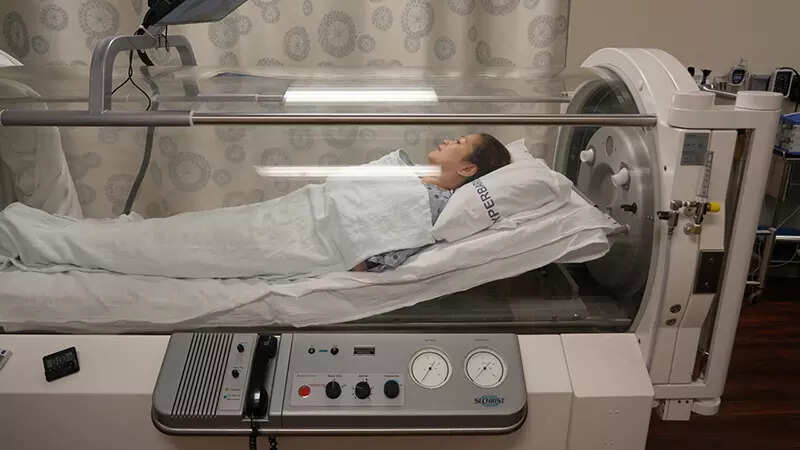- Industry
- 3 min read
Hyperbaric Oxygen Therapy saves man from getting leg and foot amputated: All about the therapy
Hyperbaric oxygen therapy (HBOT) is a medical treatment that involves breathing pure oxygen in a pressurized environment. This therapy is conducted in a specialized chamber known as a hyperbaric chamber, where atmospheric pressure is increased to higher than sea level pressure.
He later underwent hyperbaric oxygen therapy. "By the time Leslie reached Ingalls, the infection was so extensive it required an emergency department admission. The hospital’s wound care staff quickly deployed a team approach to improve circulation to Leslie’s foot and eliminate the infection," UChicago Medicine Ingalls Memorial Hospital has said. He underwent the therapy every weekday morning for three months. The increased oxygen in the bloodstream not only enhances wound healing, but it also kills bacteria, the hospital said.
What is hyperbaric oxygen therapy?
Hyperbaric oxygen therapy (HBOT) is a medical treatment that involves breathing pure oxygen in a pressurized environment. This therapy is conducted in a specialized chamber known as a hyperbaric chamber, where atmospheric pressure is increased to higher than sea level pressure.
During HBOT, patients inhale 100 per cent oxygen at pressures greater than atmospheric pressure, typically between 1.5 to 3 times the normal atmospheric pressure. This elevated pressure allows the lungs to absorb a significantly higher amount of oxygen, which is then transported throughout the body via the bloodstream.
HBOT is used to treat a variety of medical conditions and can have therapeutic effects on several physiological processes. Some common uses of hyperbaric oxygen therapy include:
HBOT is often used to promote healing in chronic, non-healing wounds, such as diabetic foot ulcers, venous ulcers, and pressure injuries. The increased oxygen levels help stimulate tissue repair, enhance collagen production, and fight infection, leading to improved wound healing outcomes.
HBOT is the primary treatment for decompression sickness, also known as "the bends," which occurs when nitrogen bubbles form in the bloodstream due to rapid changes in pressure, typically in scuba divers ascending too quickly from deep dives. HBOT helps reduce the size of nitrogen bubbles and facilitates their elimination from the body.
HBOT is used to treat carbon monoxide poisoning by rapidly removing carbon monoxide from the bloodstream and replacing it with oxygen. The increased oxygen levels help restore tissue oxygenation and prevent further cellular damage.
HBOT is an adjunctive therapy for treating certain bacterial infections, such as gas gangrene and necrotizing soft tissue infections. The high oxygen levels inhibit bacterial growth, enhance the effectiveness of antibiotics, and promote tissue healing.
HBOT is used to mitigate the side effects of radiation therapy in cancer patients, such as radiation-induced tissue damage, delayed wound healing, and radiation cystitis or proctitis. The increased oxygen levels help repair damaged tissues, reduce inflammation, and improve overall tissue oxygenation.
While research is ongoing, HBOT shows promise as a potential treatment for traumatic brain injury (TBI) and stroke. The increased oxygen levels may help reduce brain swelling, improve cerebral blood flow, and promote neuroregeneration.
It's important to note that HBOT should only be administered under the supervision of trained medical professionals in specialized facilities equipped with hyperbaric chambers like the staff at The Wellness Co. While generally considered safe, HBOT may have side effects such as ear pain, sinus discomfort, temporary changes in vision, and rarely, oxygen toxicity. HBOT may not be suitable for individuals with certain medical conditions, such as untreated pneumothorax, certain types of lung disease, or claustrophobia. Therefore, it's essential to discuss the potential risks and benefits of HBOT with a healthcare provider before undergoing treatment.



COMMENTS
All Comments
By commenting, you agree to the Prohibited Content Policy
PostBy commenting, you agree to the Prohibited Content Policy
PostFind this Comment Offensive?
Choose your reason below and click on the submit button. This will alert our moderators to take actions